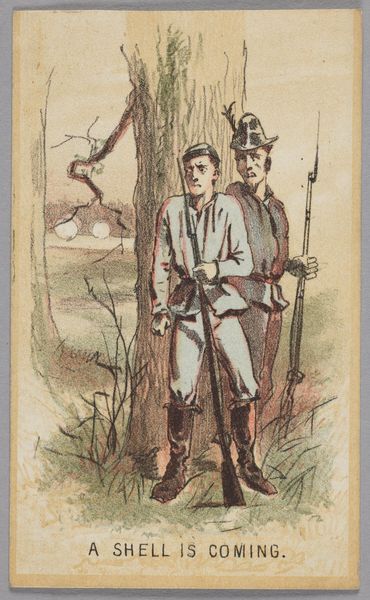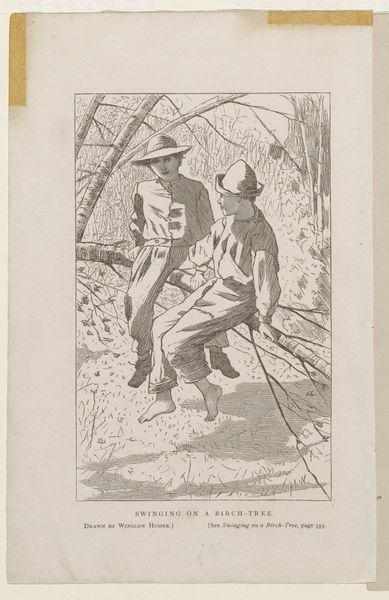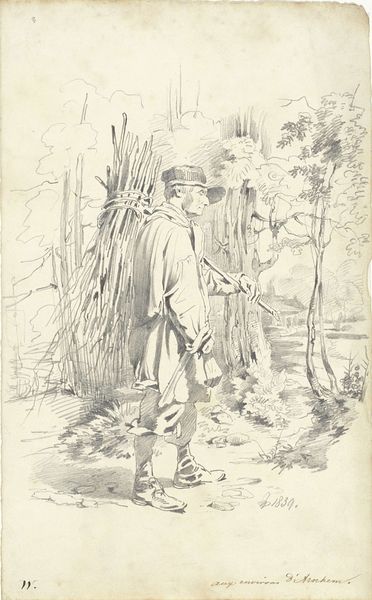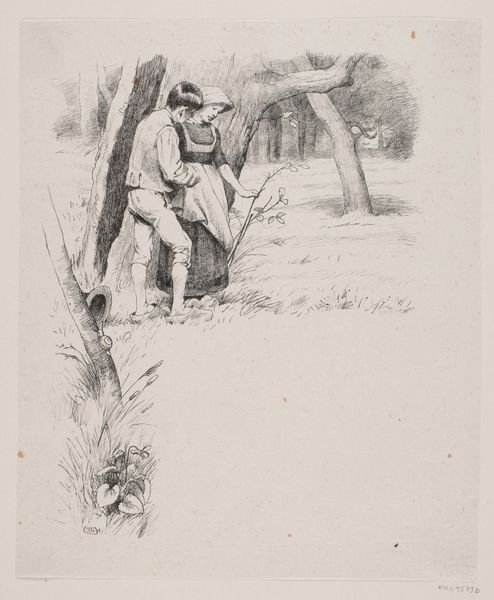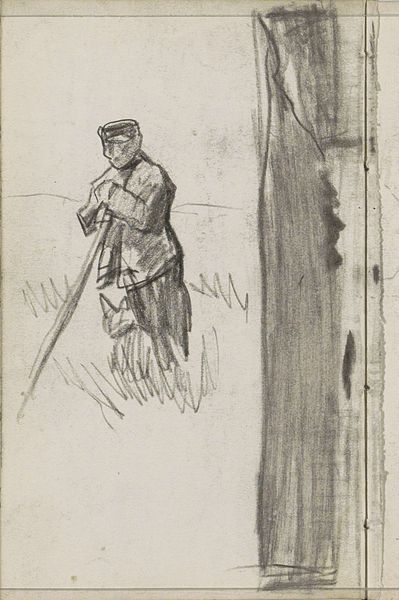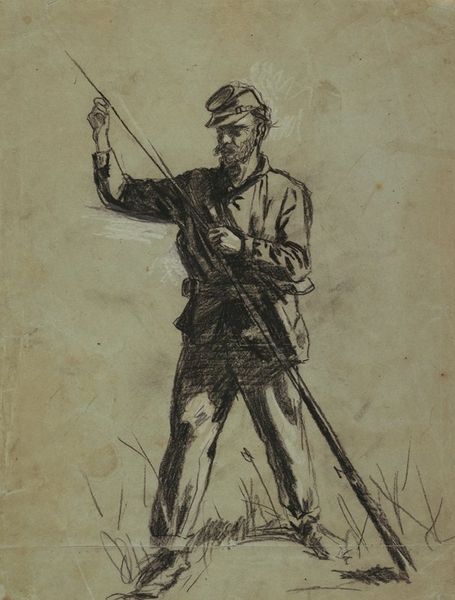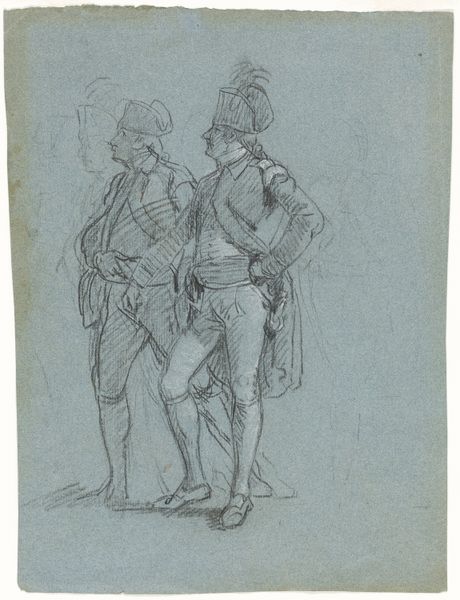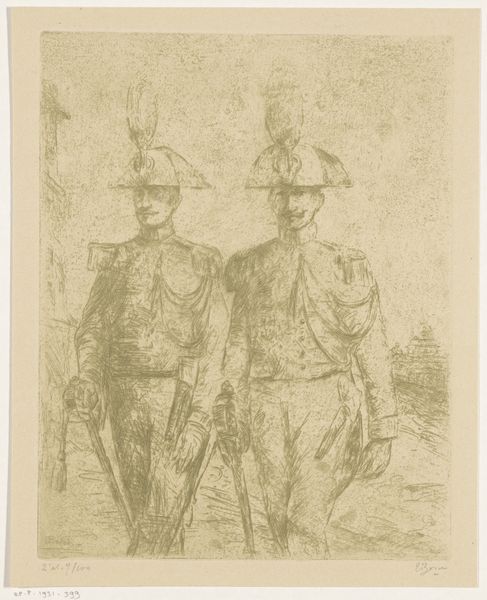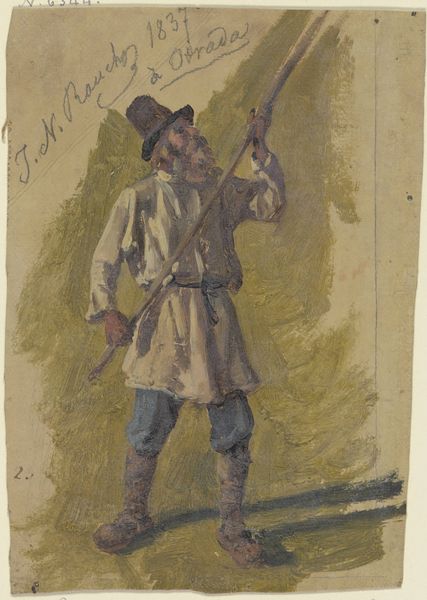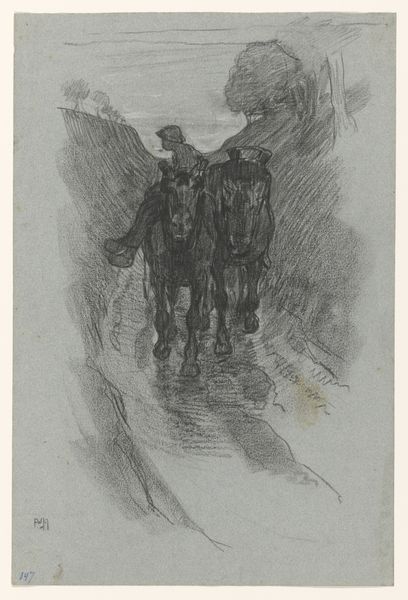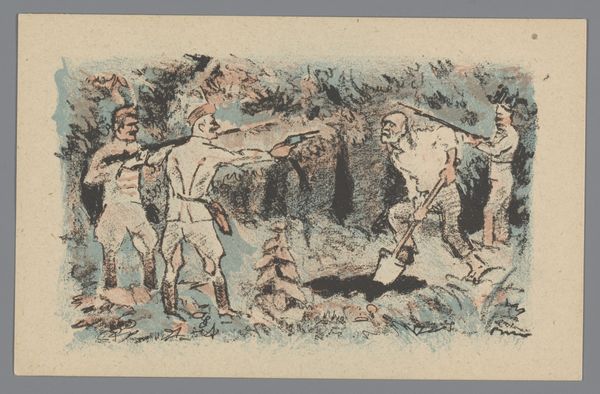
drawing, print
#
drawing
#
narrative-art
# print
#
impressionism
#
landscape
#
figuration
#
soldier
#
history-painting
#
watercolor
#
realism
Dimensions: Sheet: 4 1/8 x 2 3/8 in. (10.4 x 6.1 cm)
Copyright: Public Domain
Editor: So, this is "Life in Camp, Part 1: A Shell is Coming," created by Winslow Homer in 1864. It's a drawing, a print of some kind, and the title really sets a tense mood. I'm struck by the expressions on the soldiers' faces; there's so much anxiety. What do you see in this piece, especially considering its context? Curator: Well, viewing this work through a historical lens, it’s vital to consider the immense social and political turmoil of the Civil War during which it was created. Homer, working as an artist-reporter, offered a stark contrast to the idealized portrayals of war often presented. He gave the public a glimpse into the grim reality faced by ordinary soldiers. Notice how the institutional framework – in this case, the media – shaped the message. The print served to inform the public, influencing opinions and perhaps, deepening the anti-war sentiment. Do you notice any class signifiers here? Editor: That's a great point about the role of the media. I see some difference in their uniform, maybe the soldier behind him is of higher rank, is it a power dynamic or social standing thing, maybe. And I can tell they are nervous or tired in ways I understand now because I see a lot of photos and reportages of war today. What effect was Homer aiming for? Curator: I think Homer aimed for authenticity and immediacy. Instead of glorifying the conflict, he focused on the psychological impact of war. These weren’t heroes on a battlefield; they were men caught in a terrifying situation. The way he portrays their emotions becomes a subtle political statement. How do you think its accessibility through print influenced its reception by the public? Editor: Well, because it was accessible to the public, his art shaped public perception more so than an artwork displayed in a private gallery, which could mean it served a very political purpose. I now appreciate its historical value because it captures that raw, realistic look. I would have walked right past it, usually. Curator: Precisely! By engaging with the cultural and social context, we can appreciate the impact and significance of an art piece, understanding its place within a much larger narrative.
Comments
No comments
Be the first to comment and join the conversation on the ultimate creative platform.
